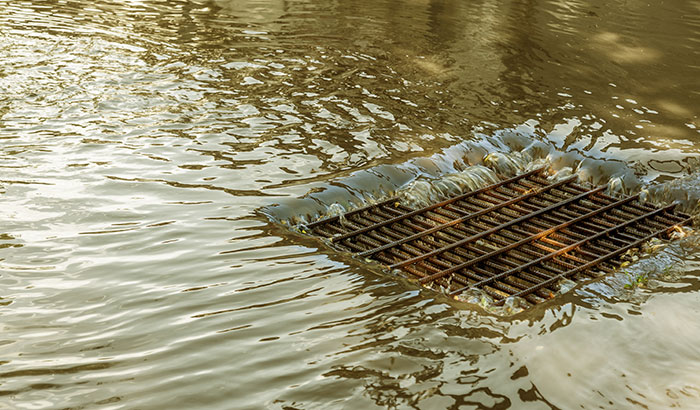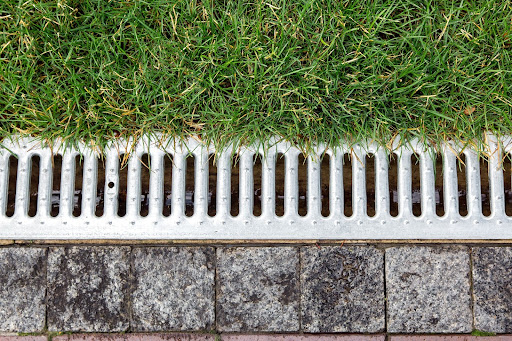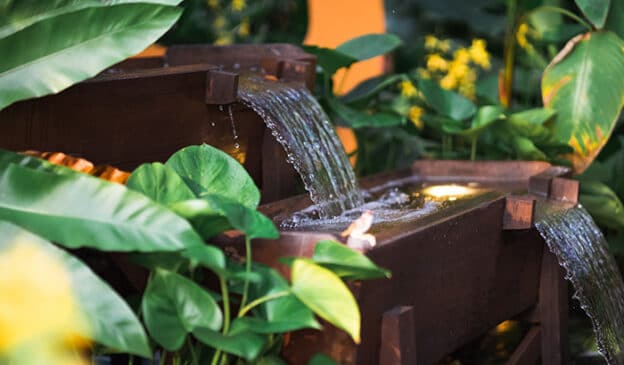Managing stormwater efficiently is crucial for maintaining a sustainable and healthy environment. When left uncontrolled, stormwater can lead to various problems such as flooding, erosion, water pollution, and damage to infrastructure. That’s why it is essential to implement effective stormwater management practices.

One effective solution for managing stormwater is through the use of a water drainage system. A water drainage system helps redirect and control stormwater flow, preventing it from accumulating in unwanted areas. It consists of various components such as drains, pipes, and basins designed to collect and channel excess water away from structures and landscapes.
Understanding Stormwater and Its Impact
Stormwater is the water accumulating on surfaces such as roofs, driveways, and streets during rainfall or snowmelt. It is important to note that stormwater is not treated like wastewater or sewage. Instead, it flows directly into storm drains, which discharge it into nearby water bodies such as rivers, lakes, or oceans.
Uncontrolled stormwater can pose significant environmental and infrastructure problems. Firstly, excessive stormwater runoff can lead to erosion of soil and stream banks, causing habitat destruction and biodiversity loss.
Secondly, stormwater carries pollutants such as oil, chemicals, and sediments from urban areas, contaminating water bodies and harming aquatic ecosystems. Moreover, during heavy rainfall events, inadequate stormwater management can result in flooding, causing property damage and posing risks to human safety.
Proper stormwater management is essential to mitigate the negative impacts of uncontrolled stormwater. By implementing effective strategies, we can reduce erosion, protect water quality, and minimize flooding risks. It is crucial to adopt sustainable practices and utilize water drainage systems to efficiently manage stormwater.
Understanding Water Drainage Systems
Water drainage systems play a vital role in effectively managing stormwater. These systems are designed to collect, control, and redirect excess water away from structures, landscapes, and vulnerable areas. By efficiently channeling stormwater, drainage systems help prevent flooding, erosion, and water damage, ensuring the longevity and safety of your property.
There are various types of drainage systems available, each suited for specific scenarios and requirements. Surface drains are commonly used in areas with pavement or compacted surfaces, as they efficiently collect water from these surfaces and direct it into underground pipes.
French drains, on the other hand, are ideal for areas with poor soil drainage. They consist of a perforated pipe surrounded by gravel or rock, allowing water to seep through and be redirected away from the problem area.
Retention ponds are larger-scale drainage systems designed to temporarily hold and slowly release stormwater. They are especially beneficial in areas prone to heavy rainfall or where groundwater recharge is needed.
The benefits of using a water drainage system are numerous. Firstly, they protect your property from water-related damage by efficiently managing stormwater and preventing it from accumulating in unwanted areas. This helps maintain the structural integrity of buildings, driveways, and landscapes.
Secondly, drainage systems contribute to the preservation of soil quality by reducing erosion caused by excessive water runoff. Additionally, these systems play a crucial role in preventing water pollution by effectively capturing and treating pollutants carried by stormwater.
Lastly, using a water drainage system can enhance the overall aesthetics of your property, as it allows for proper landscaping and prevents unsightly puddles or standing water.

Tips for Efficiently Dealing with Stormwater Using a Water Drainage System
Tip 1: Assessing Your Property’s Drainage Needs
Begin by identifying potential problem areas where water accumulates on your property. Look for areas that consistently have standing water after rainfall or areas where erosion occurs. Common problem areas include low-lying spots, sloped areas without proper grading, and areas near downspouts or gutters.
For example, you might notice that water pools near the foundation of your house, causing dampness in the basement. This indicates the need for a drainage solution to redirect water away from the foundation.
Consider the landscape and terrain of your property when assessing drainage needs. Take note of the natural slopes, existing landscaping features, and any potential barriers to water flow, such as trees or structures.
For instance, if your property has a slope that directs water towards a certain area, you may need to implement a drainage system that effectively redirects the water or absorbs it before it causes issues.
Tip 2: Planning and Designing the Drainage System
Measure the slope of your property to determine the natural flow of water. This information is crucial for designing a drainage system that aligns with the natural water movement.
You can measure the slope using a digital level or a simple water level method, where you attach a clear hose to a filled container and observe the water level at different points on your property.
Choose the appropriate drainage system based on your property’s needs and characteristics. The type of system will depend on factors such as soil type, rainfall intensity, and the size of the area you need to drain. Consider options like surface drains, French drains, or retention ponds, which were discussed earlier.
Tip 3: Proper Installation of the Drainage System
It is essential to seek professional help, especially for complex drainage system installations. A professional can provide expertise and ensure the system is correctly designed and installed.
However, if you opt for a more straightforward drainage solution, such as installing a surface drain, you can tackle the installation yourself by following manufacturer instructions and guidelines.
When installing the drainage system, it’s crucial to consider factors such as the depth, slope, and positioning of the drains or pipes. Ensure the system directs water away from vulnerable areas and toward suitable discharge points or retention areas.
Additionally, proper backfilling and compacting around the drain pipes or gravel in French drains is important to prevent settling and maintain system functionality.
Tip 4: Regular Maintenance of the Drainage System
Schedule routine inspections of your drainage system to identify potential issues or blockages. Check for debris, sediment buildup, or vegetation growth that might obstruct the flow of water.
Regular inspections allow you to promptly address any maintenance needs and keep the system functioning optimally.
Clear any debris or obstructions that you find during inspections. Remove leaves, branches, or other debris from surface drains, and clean out any sediment or clogs from French drains or retention ponds.
Additionally, keep gutters and downspouts clear of leaves and debris to ensure proper flow into the drainage system.
Tip 5: Using Rainwater Harvesting Techniques
Consider incorporating rainwater harvesting techniques into your drainage system. These techniques allow you to capture and utilize rainwater for irrigation purposes or to replenish groundwater.
Options such as rain barrels, cisterns, or permeable surfaces can help reduce stormwater runoff and provide a sustainable water source for your landscaping needs.
Implementing rainwater harvesting techniques helps manage stormwater, promotes water conservation, and reduces the strain on municipal water resources.
These tips make dealing with stormwater using a water drainage system a much easier process. Assessing your property’s needs, planning and designing the system, ensuring proper installation, regular maintenance, and utilizing rainwater harvesting techniques will contribute to effective stormwater management and protect your property from potential water-related issues.
Trust LaytonScape
If you’re looking for professional assistance with your water drainage system, consider LaytonScape, a trusted provider of landscaping and drainage solutions. With our expertise and commitment to quality, LaytonScape can help you create an efficient and sustainable stormwater management system tailored to your specific needs.
Together, let’s take action and ensure a cleaner and greener future for all. Request an estimate to get started today!



